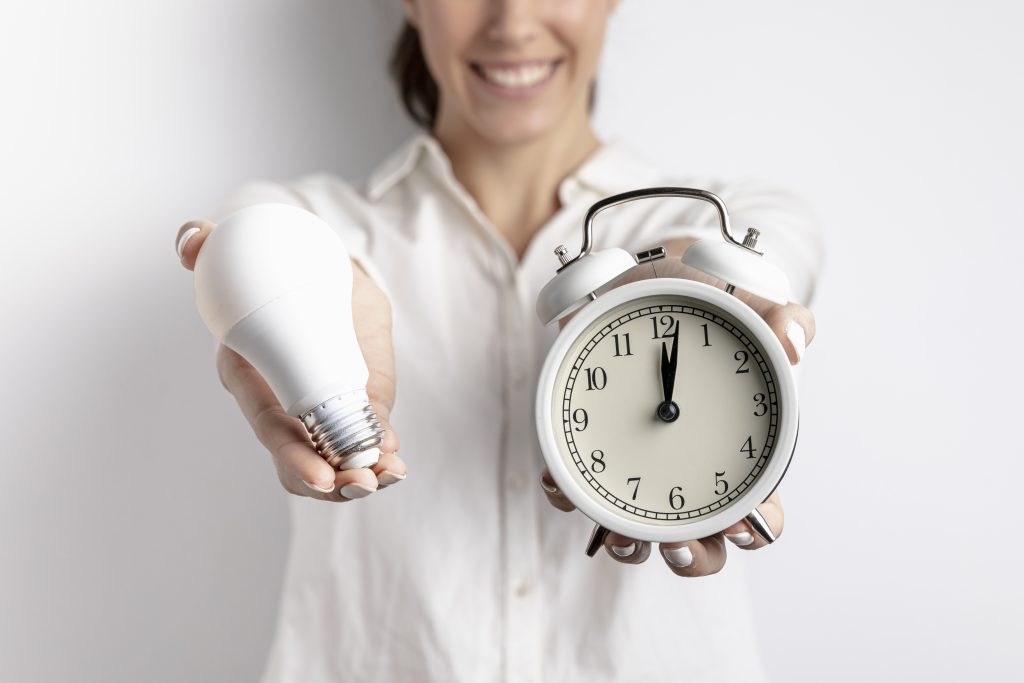In today’s world, many people are caught in the trap of time management—racing against the clock to complete tasks, meet deadlines, and fit everything into a 24-hour day. However, the reality is that time is a finite resource, and no matter how effectively we manage it, there’s only so much we can do in a day. But what if there’s a more effective way to structure our days? What if, instead of focusing on time, we could manage our energy levels to accomplish more with less stress? This concept of planning by energy is gaining traction as an alternative to traditional time management techniques.
By prioritizing energy instead of time, we align our tasks with the natural ebb and flow of our energy levels. This approach not only helps us become more productive but also enhances well-being, making our daily routines more sustainable.

The Energy-First Approach to Productivity
In a traditional time management model, we’re taught to divide our day into chunks—typically with fixed time slots for various tasks. However, the energy-first approach shifts the focus from rigid schedules to understanding when we have the most energy and how we can leverage it for maximum impact.
Here’s why this approach is so effective:
-
Natural Energy Rhythms
Everyone’s energy levels fluctuate throughout the day. For some, early mornings are a peak time for focus and creativity. For others, late afternoons may offer a productivity boost. Understanding your unique energy patterns is key to scheduling your most important or demanding tasks when you’re at your best. -
Avoiding Burnout
Constantly pushing through fatigue leads to burnout. Planning based on energy helps you avoid overloading yourself during low-energy periods and promotes regular breaks to recharge. -
Improved Focus and Output
When you align your tasks with peak energy times, you naturally improve your concentration and effectiveness. This leads to better results in less time, as you’re working when your brain is functioning at its best.
How to Identify Your Energy Peaks and Troughs
Before you can plan by energy, you need to understand your personal energy rhythms. While some general trends exist (many people experience a dip in energy after lunch, for example), the exact patterns vary from person to person.
1. Track Your Energy Levels
Start by tracking your energy levels over the course of a few days or weeks. Use a simple scale of 1 to 10 to rate your energy throughout the day. Note when you feel most energetic and when you experience slumps.
2. Pay Attention to Task Performance
Pay attention to how well you perform different tasks at various times of the day. For example, do you tend to write more fluently in the morning, or do you find it easier to focus on analytical tasks later in the day?
3. Evaluate Emotional Energy
Energy isn’t just physical—emotional energy also plays a huge role. If you’re dealing with high stress or difficult emotional situations, your energy levels will be affected. Planning by energy means understanding when you need emotional breaks and when you can tackle emotionally demanding tasks.
How to Plan Based on Energy, Not Time
Once you have a better understanding of your energy levels, it’s time to start planning your day. Here’s how to implement an energy-first approach to productivity:
1. Prioritize High-Energy Tasks
Schedule your most demanding tasks—whether they require focus, creativity, or problem-solving—during your peak energy periods. For example, if you tend to be most creative in the mornings, reserve this time for brainstorming or writing.
2. Match Low-Energy Tasks to Slumps
During your energy troughs, tackle routine tasks that don’t require intense focus or creativity. This might include answering emails, scheduling appointments, or organizing documents. These tasks can be done efficiently when your energy is lower, without adding to mental fatigue.
3. Incorporate Energy-Boosting Breaks
Plan for breaks that will recharge your energy levels. This could be a short walk, a mindfulness exercise, or even a power nap. Breaks are essential for maintaining high energy throughout the day and preventing burnout.
4. Use Technology to Track and Optimize Your Energy
There are a variety of apps and devices designed to help you monitor your energy levels. For example, fitness trackers like the Oura Ring or Fitbit provide insights into your sleep patterns, helping you understand your energy cycles. Likewise, apps like Toggl or RescueTime can help you track your productivity and identify energy patterns over time.
The Benefits of Planning by Energy
Switching to an energy-first approach can significantly improve both productivity and well-being. Here’s why it works:
1. Enhanced Focus and Creativity
When you align your tasks with your peak energy periods, your mind is sharper, more focused, and better able to produce creative solutions. Tasks become easier, and you can complete more work in less time.
2. Reduced Stress and Burnout
By avoiding the “time pressure” and working when you feel most energized, you reduce stress. Regular breaks and alignment with energy rhythms prevent the exhaustion that comes from working against your body’s natural patterns.
3. More Sustainable Workflows
Planning by energy leads to more sustainable routines. You’re less likely to experience the burnout that often follows long stretches of constant work. Energy-based planning encourages a healthier balance between intense work and restorative activities.
4. Better Decision Making
When your energy levels are optimized, your decision-making process becomes clearer. Without the fog of fatigue, you’re more likely to make better, more effective decisions in both work and personal life.
Practical Tips for Implementing Energy-Based Planning
If you’re ready to give energy-first planning a try, here are some actionable tips:
-
Establish Boundaries for Work and Rest
Set clear boundaries between work and rest. Use energy-boosting activities during breaks and avoid working during low-energy periods. -
Experiment with Your Schedule
Not everyone’s energy cycles are the same, so experiment with your schedule. Try to schedule important tasks when you’re at your peak and see what works best for you. -
Listen to Your Body
Pay attention to signs of physical fatigue, stress, and emotional overload. These signals are often the body’s way of saying it’s time to take a break. -
Use Tools to Map Your Energy
Use apps or tools to help track your energy levels and optimize your planning process. The more data you have, the better you can fine-tune your schedule.
Conclusion
In a world that demands more time and attention, planning based on energy rather than time offers a much more sustainable way to work, create, and live. By embracing your natural energy cycles, you can enhance productivity, reduce stress, and improve your overall well-being.
Rather than trying to fit tasks into a rigid schedule, focus on when you feel most capable and energized. Work with your body and mind, not against them, and watch your productivity—and happiness—soar.
Reference
- Stein, D. (2019). The Science of Energy Management in Work. Harvard Business Review.
https://hbr.org - Miller, S. (2016). The Productivity Project: Accomplishing More by Managing Your Time, Attention, and Energy. Crown Business. – The Productivity Project on Amazon
- Elliot, A. J., & Church, M. A. (1997). A hierarchical model of approach and avoidance motivation. Journal of Personality and Social Psychology. https://doi.apa.org









